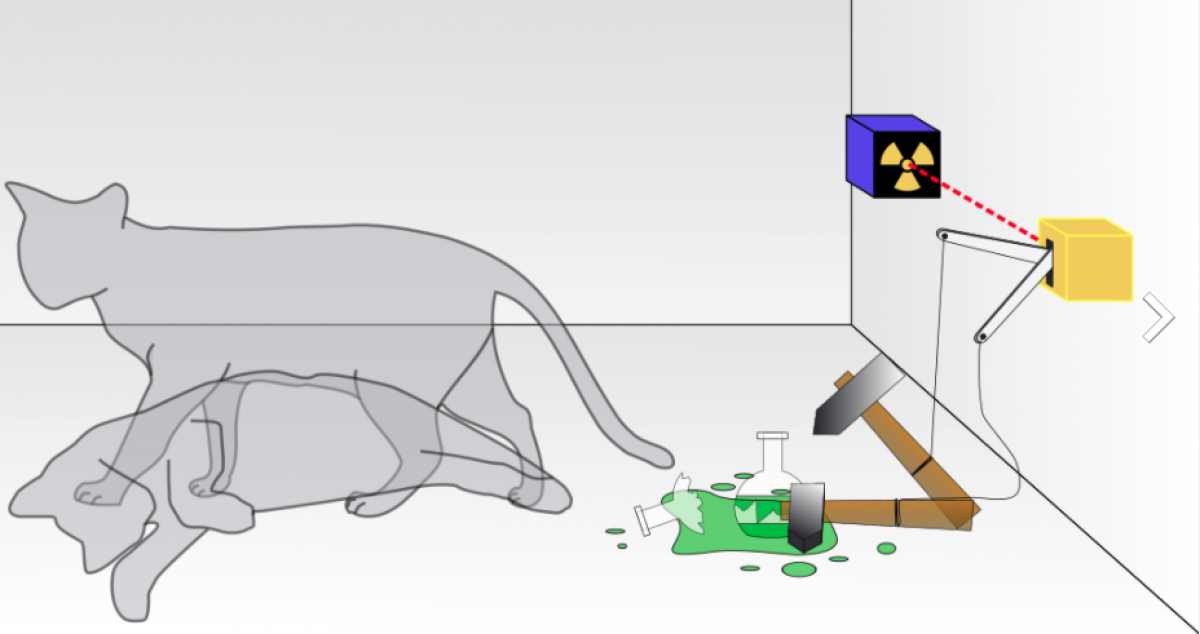
Quantum mechanics is concerned with the behavior of the tiniest of particles, and usually the mathematics behind it is relegated to this tiny realm. Now, a researcher from the California Institute of Technology has used a fundamental quantum physics equation to understand huge self-gravitating space disks.
Konstantin Batygin, an assistant professor at Caltech, has discovered that the changing shapes of spinning disks of matter around massive astronomical objects like black holes can be described by the Schrödinger equation. The evolution of these disks has stumped astrophysicists for many years.
Swarming matter
From the satellites that fly around Earth to the the planets that swarm around the sun, gravitational forces create huge rotating disks of matter throughout the universe. Over time, these flat circular disks can become warped and distorted, but astrophysicists don't really know why.
Batygin decided to use a mathematical scheme called perturbation theory to try and explain why these spinning disks lost their shape. The model, frequently used in astronomy, blended individual bits of matter traveling on particular orbital trajectories into wires. These concentric loops of matter slowly spread angular momentum between each other.
"When we do this with all the material in a disk, we can get more and more meticulous, representing the disk as an ever-larger number of ever-thinner wires," Batygin said in a statement.
These wires can mirror the real orbital evolution over millions of years, resulting in a fairly accurate approximation of the changing disk.
Batygin's mathematics, however, revealed an unexpected result. A fundamental quantum physics equation was hiding in his model.
"Eventually, you can approximate the number of wires in the disk to be infinite, which allows you to mathematically blur them together into a continuum," he explained. "When I did this, astonishingly, the Schrödinger Equation emerged in my calculations."
The Schrödinger equation

The Schrödinger equation—named for creator and Nobel Prize-winning physicist Erwin Schrödinger—forms the basis of quantum physics. It describes the strange behavior of atomic and subatomic systems that evolve over time. On a tiny scale, particles behave more like waves than individual particles. Batygin's research suggests this "wave-particle duality" could also describe the large warps of an astronomical disk.
"The Schrödinger equation is an unlikely formula to arise when looking at distances on the order of light years," said Batygin. "I was fascinated to find a situation in which an equation that is typically used only for very small systems also works in describing very large systems."
Finding such an important and well-studied equation deep within self-gravitational disk models should shed light on the strange and mysterious phenomena. The link between the two spheres of science, Batygin says, in hindsight "seems like an obvious connection."
"Fundamentally, the Schrödinger equation governs the evolution of wave-like disturbances." he added. "In a sense, the waves that represent the warps and lopsidedness of astrophysical disks are not too different from the waves on a vibrating string, which are themselves not too different from the motion of a quantum particle in a box."
Uncommon Knowledge
Newsweek is committed to challenging conventional wisdom and finding connections in the search for common ground.
Newsweek is committed to challenging conventional wisdom and finding connections in the search for common ground.
About the writer
Katherine Hignett is a reporter based in London. She currently covers current affairs, health and science. Prior to joining Newsweek ... Read more
To read how Newsweek uses AI as a newsroom tool, Click here.








